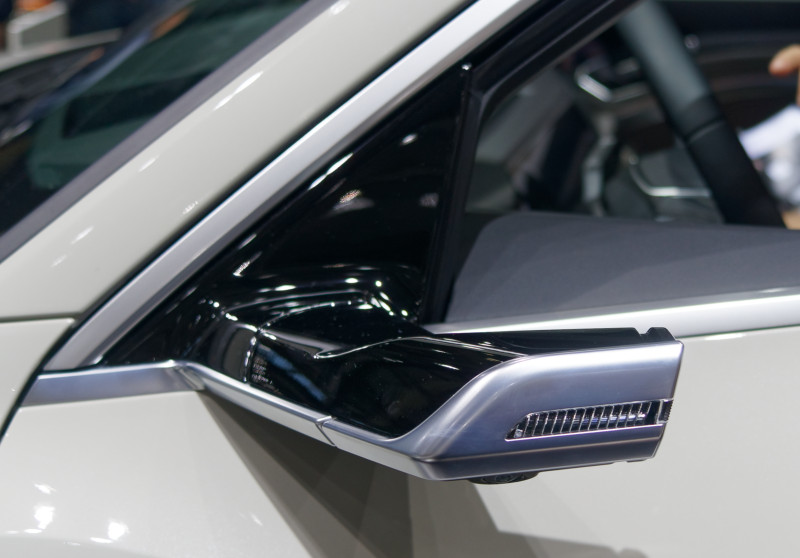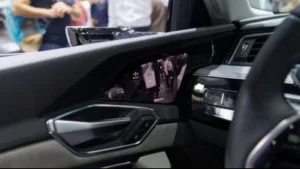The highlight in terms of displays at the show was the Audi European launch of an option on the new e-Tron all electric ‘sporty’ SUV that replaces physical wing mirrors with cameras that display their images on OLEDs that are embedded at the top front corner of the doors. One of the reasons for developing the option is to help to improve efficiency, which, of course, translates into range in an electric vehicle (although only around 1.4 miles in this case!). We also heard that wing mirror damage is the most common bodywork repair on vehicles, so making them smaller and less protruding helps to reduce the chance of damage.
 Image:Meko
Image:Meko
 The camera is much smaller than traditional optical mirrors which saves energy and may reduce accidental damage. Image:Meko
The camera is much smaller than traditional optical mirrors which saves energy and may reduce accidental damage. Image:Meko
The OLEDs, which are flat surfaced are 7″ at their widest and have touch. That means that the mirror itself can be used to adjust the angle and degree of zoom of the mirror. We tried it and it was simple to use, although the displays could quite quickly become grubby using the touch functions.
We were unable to get details of the cost of the option at press time.
Pricing for the base model starts from €80,000, so this is far from a mass market application. The company said that it chose an SUV as the first product as the design could more easily accomodate the depth of the battery than a lower model, which would otherwise have to be quite wide.
Analyst Comment
The reason that this is just an option may well be regulatory. According to the UK authorities, and based on EU rules (http://tinyurl.com/y723fcb9), a fixed external mirror (and with no special definitions to take account of cameras) is mandatory on cars. I have read also that the US mandates dual mirrors. However, this seems to conflict with Audi’s UK website which highlights the external mirror replacements.
We’ve talked in the past about qualifying OLEDs for automotive use and the potential for burn of fixed images. In practice, the image on the mirrors would be changing all the time that the car is moving, with only the adjustment icons (which are small and could be displayed with small offsets quite easily to avoid burn) static on the display, and then for only limited amounts of time. (BR)
We found this demo online of the Audi OLED
 Audi also showed this apparently OLED-based side/indicator light in a concept car. The individual blocks were addressable. Image:Meko
Audi also showed this apparently OLED-based side/indicator light in a concept car. The individual blocks were addressable. Image:Meko
 Audi also had this concept rear light using, apparently, OLED. Image:Meko
Audi also had this concept rear light using, apparently, OLED. Image:Meko

